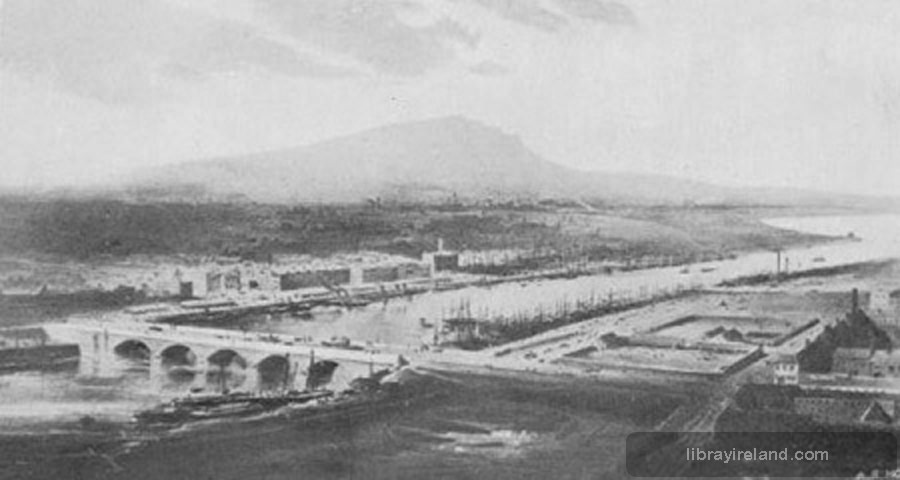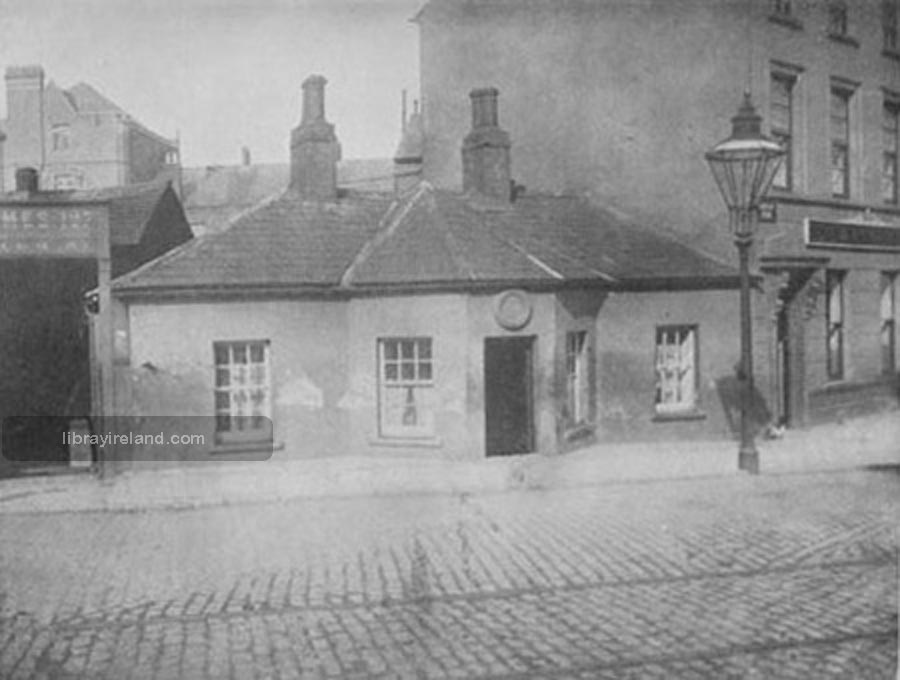Early Travel and Transport - Story of Belfast
The first stage coach to Dublin was in the year 1752, and the journey occupied three days, but the roads were so bad that it could not go beyond Newry during the winter months.
Then in 1788, a coach was able to go to Dublin from Newry in twenty-six hours. The speed was so marvellous that it was called "The Newry Flying Coach," and the fare was 1s. 3d. a mile. However, as many people were afraid of such terrific speed, a post chaise could be hired at the curious price of 1s. 7½d. a mile, and the whole journey was performed in two days and a half. A mail coach ran from Belfast to Carrickfergus in the year 1811, and it held three or four inside passengers, and took two or three hours for the journey. It was a favourite amusement for the Belfast Academy boys to stand at St. Ann's Church gate and cheer the "Royal Oak " as it passed.
In 1803, it was considered a great advance in travelling, when a second coach was put on the road to Dublin, and thirty or forty people could travel at once. At this time ladies were carried to evening parties in sedan chairs.
Early in the nineteenth century, it must have been a curious sight when Mr. Bradshaw of Milecross used to drive a tandem through Smithfield. He had a home-made chariot—which, to say the least of it, was peculiar—it had a fire inside and a chimney for the smoke to get out through the top of the carriage. The speed was not very great, for it was drawn by two oxen.
The first railway in Ireland was projected and carried out by a clever engineer named Vignolles. In 1834 the line was opened from Dublin to Kingstown, and the first engine was the "Hibernian." Vignolles met with great opposition, but he persevered, and the railway was a great success. He afterwards extended it to Dalkey, on the "atmospheric " system. The railway from Belfast to Lisburn was the second line in Ireland, and it was opened in the year 1839. An unfortunate mistake occurred on the opening day, for the engine got off the line and sank in clay. However, it was soon made right, and for some time Lisburn was the limit. The trains were to go at five miles an hour, and it was even thought they might go at twelve miles with care on a well-laid railway line.
The Belfast and Holywood Railway was opened in 1846, and in 1848 another was made from Belfast to Ballymena. The railway system was gradually extended in all directions until at the present time Ireland is covered by a network of railway lines, bringing almost every part of the country into closer touch with the towns. The first tramway laid in Ireland was from Warrenpoint to Rostrevor. It was opened in the year 1877, and it is still in use. A great advance in travelling was made in 1883, when Mr. William Traill completed the first electric tramway in the world. He conquered many difficulties, and immense opposition, but at last he succeeded, and the electric line was opened from Portrush to Bushmills, and shortly afterwards extended to the Giant's Causeway. Scientific men came from all parts of the world to examine the first electric tramway. It gave satisfaction then, and continues to do so still.
The Mono-railway was also used in Ireland many years ago, and now the Gyroscopic railway is the invention of another Irishman.
In the future, we may expect to see great discoveries in the conquest of the air. Irishmen, who have always been in the front rank of invention, have fresh laurels to gain in improvements in aeroplanes.
The first attempt in Belfast to travel through the air was made by a man named Livingstone, in the year 1825. He tried to make a balloon ascent for three successive days, and, on the evening of the third day, was successful. He went from the Infantry Barracks in Pinkerton's Row, to Fort William. There was intense excitement. His flight was eagerly followed by large crowds of people, and he was carried back to town amid great scenes of triumph.
I often think that we do not give sufficient honour to the early pioneers of our great inventions. They spent the best years of life and persevered through many difficulties and great opposition, often at large personal loss, but in the end succeeded in perfecting their discoveries. We should never forget what we owe to such men.
The pneumatic tyre is also the invention of a Belfast man. When the first bicycle was made in the year 1819, it was called a "dandy horse," and now-a-days one can easily imagine that the honour and glory of riding such a machine existed more in the imagination than in reality. However, when Dunlop's pneumatic tyre was invented, bicycle riding became a pleasure. The first one was tried in 1867,—a solid tyre—but it was not a success. It was tried with variations again and again, but did not fulfil the desired idea. Mr. Dunlop took it up and worked until he produced the famous pneumatic tyre which is now in almost universal use for wheeled conveyances.
Mr. Dunlop began life as a veterinary surgeon in Belfast, but he gave up his profession after his great invention became successful. His tyres are now adapted to motor cars, carriages and all kinds of bicycles, and Dunlop's pneumatic tyres are known and used everywhere.
We owe the great improvement which has taken place in recent years in our roads to the skill of another Belfast man, Mr. MacAdam, who had a foundry in Townshend Street. He worked out an idea that revolutionised road-making. Up to his time the roads were made with unbroken boulder stones of different sizes, which made a very unsatisfactory road. He tried making a road by placing large hand-pitched stones in the bottom, and these were covered on the top by broken stones just small enough to pass through a two-inch ring. Later on, this was still further improved by laying smaller stones on the top and rolling with a heavy roller. Our latest roads are now made with a mixture of tar and pitch used with the stones, these roads are named "Tar Macadam." Macadamised roads are known and made all over the world and are called in every place by the name of our fellow-townsman.


